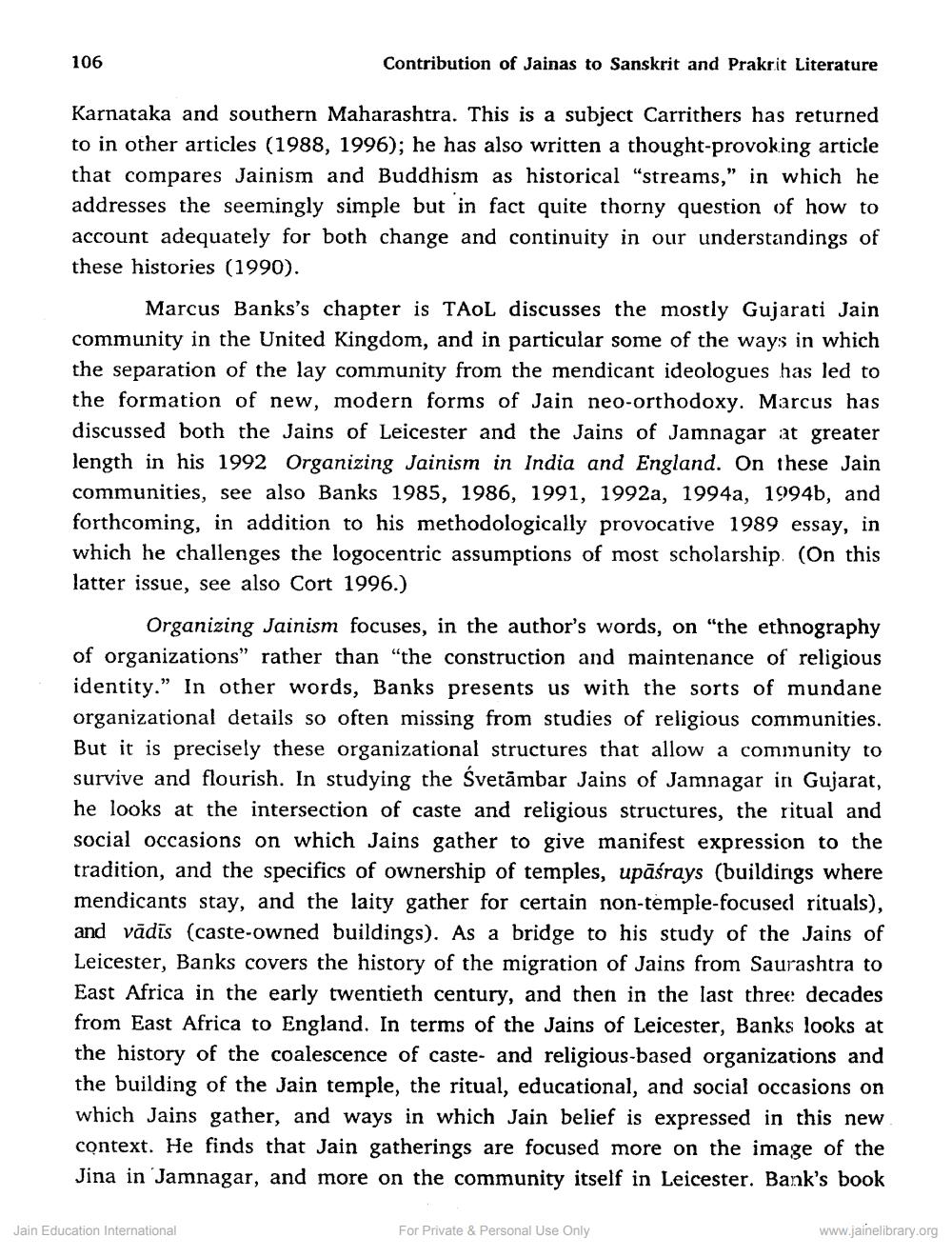________________
106
Contribution of Jainas to Sanskrit and Prakrit Literature
Karnataka and southern Maharashtra. This is a subject Carrithers has returned to in other articles (1988, 1996); he has also written a thought-provoking article that compares Jainism and Buddhism as historical “streams," in which he addresses the seemingly simple but in fact quite thorny question of how to account adequately for both change and continuity in our understandings of these histories (1990).
Marcus Banks's chapter is TAOL discusses the mostly Gujarati Jain community in the United Kingdom, and in particular some of the ways in which the separation of the lay community from the mendicant ideologues has led to the formation of new, modern forms of Jain neo-orthodoxy. Marcus has discussed both the Jains of Leicester and the Jains of Jamnagar at greater length in his 1992 Organizing Jainism in India and England. On these Jain communities, see also Banks 1985, 1986, 1991, 1992a, 1994a, 1994b, and forthcoming, in addition to his methodologically provocative 1989 essay, in which he challenges the logocentric assumptions of most scholarship. (On this latter issue, see also Cort 1996.)
Organizing Jainism focuses, in the author's words, on "the ethnography of organizations" rather than "the construction and maintenance of religious identity.” In other words, Banks presents us with the sorts of mundane organizational details so often missing from studies of religious communities. But it is precisely these organizational structures that allow a community to survive and flourish. In studying the Svetambar Jains of Jamnagar in Gujarat, he looks at the intersection of caste and religious structures, the ritual and social occasions on which Jains gather to give manifest expression to the tradition, and the specifics of ownership of temples, upāśrays (buildings where mendicants stay, and the laity gather for certain non-temple-focused rituals), and vādīs (caste-owned buildings). As a bridge to his study of the Jains of Leicester, Banks covers the history of the migration of Jains from Saurashtra to East Africa in the early twentieth century, and then in the last three decades from East Africa to England. In terms of the Jains of Leicester, Banks looks at the history of the coalescence of caste- and religious-based organizations and the building of the Jain temple, the ritual, educational, and social occasions on which Jains gather, and ways in which Jain belief is expressed in this new context. He finds that Jain gatherings are focused more on the image of the Jina in Jamnagar, and more on the community itself in Leicester. Bank's book
Jain Education International
For Private & Personal Use Only
www.jainelibrary.org




